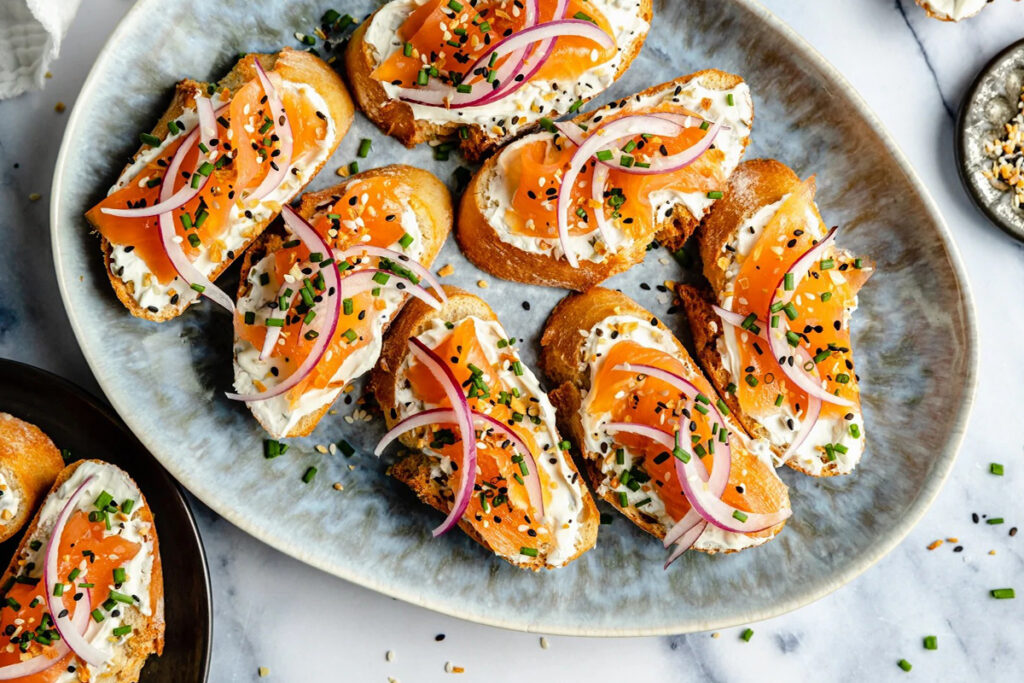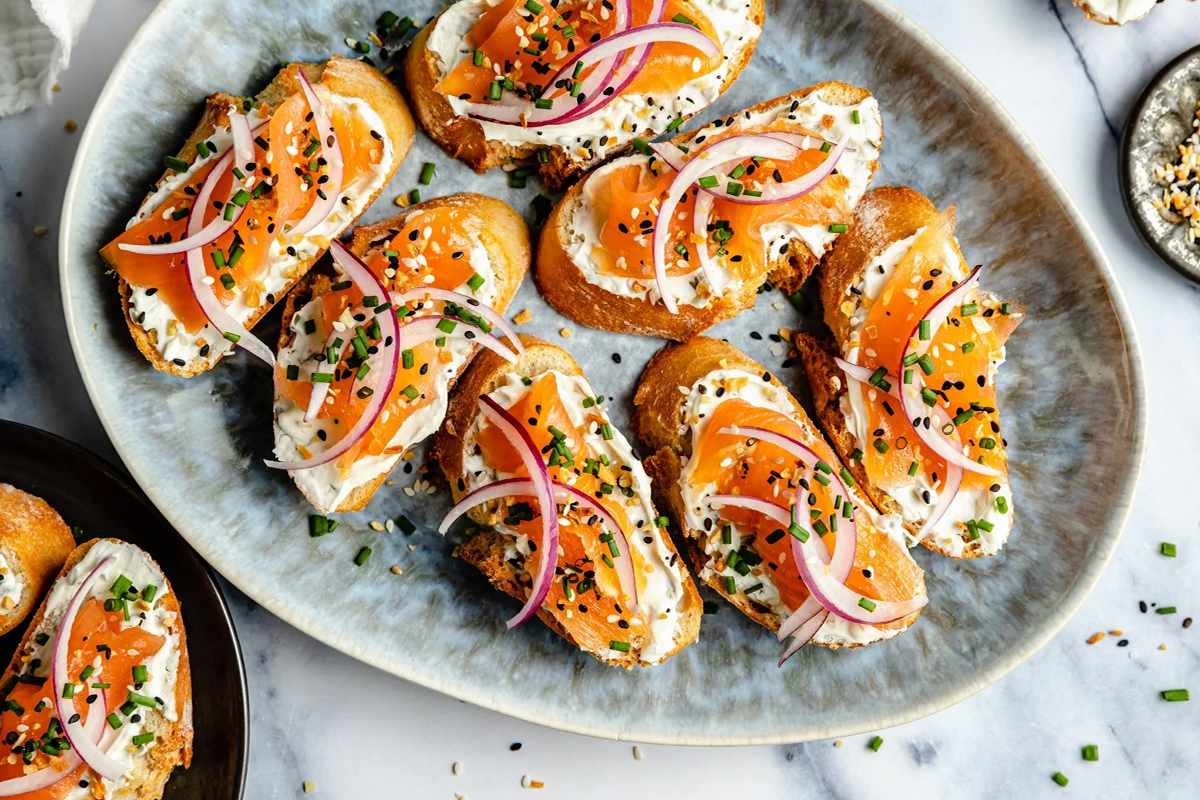Preparation and Techniques
1. Introduction to Smoking Salmon

Smoking salmon is a time-honored method that infuses the fish with rich, smoky flavors while preserving its delicate texture. The process can seem complex, but once you master the basic techniques, you’ll find that it’s one of the most rewarding ways to prepare salmon. The key to perfect smoked salmon lies in controlling both the temperature and the smoking time to avoid overcooking and drying out the fish. This guide covers everything from choosing the right salmon to optimizing smoking time based on the method.
2. Types of Smoking Methods
There are two primary methods to smoke salmon, each impacting how long you should smoke it:
- Hot Smoking: This method involves cooking the salmon at temperatures between 175°F and 250°F. It usually takes anywhere from 45 minutes to 2 hours, depending on the thickness of the salmon and the temperature. Hot smoking results in fully cooked fish with a flaky texture.
- Cold Smoking: Cold smoking, typically done below 90°F, can take up to 12 hours. This method is more about curing than cooking, resulting in a product more like lox than cooked fish.
For beginners, hot smoking is generally recommended due to its simplicity and safety. If you’re looking to dive deeper into smoker setup, check out Traeger Grills’ Smoking Guide.
3. Choosing the Right Salmon for Smoking
Not all salmon is created equal when it comes to smoking. You’ll want to consider the type of salmon you are using, as the fat content will affect both the flavor and the smoking time.
- Wild-Caught vs. Farmed Salmon: Wild-caught varieties like King salmon or Sockeye have higher fat content, which enhances the smoky flavor and helps keep the fish moist during smoking. Farmed salmon can also be used but tends to have a different texture due to a lower fat content.
- Size and Thickness: Thicker fillets will naturally take longer to smoke than thinner cuts. It’s best to go for salmon that is around 1-1.5 inches thick for consistent smoking.
A good tip is to use a reliable thermometer to ensure the salmon is done when the internal temperature reaches around 135°F-145°F. For more information on internal temperatures and safety guidelines, refer to the USDA Safe Cooking Guidelines.
4. Preparing the Salmon for Smoking
Before you even light up your smoker, the preparation of the salmon is crucial. A well-prepped fish will yield better flavor and moisture retention during the smoking process.
- Brining: One of the most important steps in preparing salmon is brining. Brining the fish helps it retain moisture and flavor during the smoking process. You can either use a wet brine (water, salt, sugar) or a dry brine (just salt and sugar). Brining for 2-4 hours is recommended for best results.
- Pellicle Formation: After brining, you’ll want to let the salmon rest uncovered in the fridge to develop a pellicle, a thin, tacky layer that helps the smoke adhere to the fish. This step can take 1-2 hours and should not be skipped.
For seasoned smokers, experimenting with additional seasonings or marinades such as brown sugar, lemon zest, or dill can elevate the flavor profile of your smoked salmon
5. Best Wood for Smoking Salmon
Choosing the right wood for smoking salmon is essential to achieving a balanced flavor. The wood you select will impart different nuances to the fish.
- Apple, Alder, Cherry, or Pecan: These woods provide a mild, sweet smoke that complements the delicate flavor of salmon. Avoid strong woods like mesquite or hickory, which can overpower the fish and result in a bitter tasteMeat Smoking HQ – Smoked to PerfectionFuriousGrill.
- Wood Chip Preparation: It’s best to soak wood chips for about 30 minutes before adding them to the smoker. This ensures they smolder rather than burn, providing a more controlled release of smoke.
By carefully selecting the wood and controlling how it’s used, you can create a beautifully balanced flavor in your smoked salmon.
6. Setting Up Your Smoker
The smoker setup is the final critical step before you begin the smoking process. Here’s a simple checklist to ensure everything runs smoothly:
- Preheat Your Smoker: Whether you’re using a pellet, electric, or charcoal smoker, preheat it to around 175°F-225°F for hot smoking. This ensures that the salmon cooks evenly without any sudden temperature fluctuationsTHEKITCHENTODAY.
- Indirect Heat: Always smoke salmon using indirect heat to avoid drying out the fish. This method ensures even cooking and a gentle smoke infusion.
- Wood Chip Management: Add soaked wood chips to the smoker every 20-30 minutes to maintain a steady smoke flow. Monitor the temperature and avoid exceeding 250°F to prevent overcooking the fish.
Following these preparation steps will set you up for a successful smoking session, resulting in perfectly tender, flavorful salmon every time.
Smoking and Post-Smoking
7. How Long to Smoke Salmon
The length of time you should smoke salmon depends on several factors, such as temperature, fillet thickness, and smoker type. Smoking times can range anywhere from 45 minutes to several hours depending on the conditions. Here’s a breakdown:
- For Hot Smoking at 225°F: Smoking typically takes between 45 minutes and 2 hours. Thinner fillets will be done in around 45-60 minutes, while thicker cuts may take closer to 2 hoursMeat Smoking HQ – Smoked to PerfectionFuriousGrill.
- For Low and Slow Smoking at 175°F-200°F: The process can take a bit longer, around 2-3 hours for a thicker fillet. Make sure to monitor the temperature of the fish to prevent overcookingEat Cured MeatTHEKITCHENTODAY.
- Use a Thermometer: The key to perfect smoked salmon is using a meat thermometer. You want to remove the salmon from the smoker once its internal temperature reaches 135°F-145°F. Letting it rest for a few minutes after removing it from heat ensures the fish retains its juices.
You can always adjust the smoking time based on factors like humidity, altitude, and desired doneness. For a more detailed guide on how temperature impacts smoking time, visit Serious Eats’ Salmon Smoking Techniques.
8. Post-Smoking: Resting, Storing, and Serving
Once your salmon is done smoking, the journey isn’t quite over. Proper handling after smoking will help preserve the texture and flavor of your fish.
- Resting Time: Allow the salmon to rest for 5-10 minutes after smoking. This lets the juices redistribute evenly throughout the fillet, making the fish moist and tenderEat Cured Meat.
- Storing Smoked Salmon: Once cooled, store the smoked salmon in an airtight container in the fridge for up to 4 days. If you want to keep it longer, wrap it tightly in plastic wrap or vacuum-seal it, and freeze it for up to 2 monthsMeat Smoking HQ – Smoked to Perfection.
- Serving Ideas: Smoked salmon is incredibly versatile and can be served in many creative ways. Try it:
- On crackers with dill cream cheese or lemon aioli.
- Flaked over salads or mixed into pasta dishes.
- In a smoked salmon dip with cream cheese and herbsTHEKITCHENTODAYEat Cured Meat.
Smoked salmon can be enjoyed warm or cold, depending on your preference. The delicate smoky flavor pairs well with fresh ingredients like lemon, capers, and herbs.
9. FAQs Based on Popular Questions
Here are some of the most frequently asked questions about smoking salmon:
- How do you know when smoked salmon is done?
- The salmon is ready when it flakes easily and reaches an internal temperature of 135°F-145°F. A visual cue is when the fish turns an opaque, light pink and the flesh pulls apart gentlyTHEKITCHENTODAYTHEKITCHENTODAY.
- Can you oversmoke salmon?
- Yes, oversmoking can cause the fish to dry out. Keep an eye on the temperature and try to stay within the recommended smoking time based on the thickness of your salmonEat Cured Meat.
- Do you need to brine salmon before smoking?
- Brining is highly recommended as it adds flavor and helps the fish retain moisture during the smoking process. A simple brine of salt, sugar, and water works well, but you can experiment with adding herbs or citrusFuriousGrill.
- What is the best wood for smoking salmon?
- Fruitwoods like apple, cherry, and alder are ideal choices as they impart a light, sweet smoke that complements the natural flavor of salmonMeat Smoking HQ – Smoked to Perfection.
Conclusion and Final Thoughts
10. Mastering the Smoking Process
To truly master smoking salmon, it’s essential to understand how different variables like temperature, wood type, and smoking time interact. By controlling these factors, you can consistently produce high-quality smoked salmon with a perfectly balanced smoky flavor and moist, tender flesh. Remember to always use a reliable meat thermometer to ensure your salmon reaches the ideal internal temperature of 135°F-145°F, which will prevent both undercooking and overcooking
11. Tips for Experimenting with Smoked Salmon
Once you’ve nailed the basics, don’t hesitate to experiment with various techniques and flavors to make your smoked salmon unique.
- Marinades and Glazes: Adding a glaze in the final minutes of smoking, such as a honey-mustard or teriyaki glaze, can give your salmon a glossy, flavorful finish. You can also try Cajun or lemon-pepper seasonings for added zestMeat Smoking HQ – Smoked to PerfectionEat Cured Meat.
- Wood Variety: While apple and cherry wood are mild and popular, you can experiment with stronger woods like pecan or even a small amount of hickory to introduce deeper flavors. Just be careful not to overpower the natural taste of the salmonMeat Smoking HQ – Smoked to Perfection.
Smoking salmon is a versatile process that allows you to tailor it to your personal taste. Whether you prefer a strong, bold flavor or something more subtle, there’s always room to innovate within the basic principles.
12. Final Serving Suggestions
Once your smoked salmon is ready, there are numerous ways to serve and enjoy it:
- As an Appetizer: Serve the salmon on crackers or crostini with a lemon-dill cream cheese spread or capers for a touch of brightnessTHEKITCHENTODAYFuriousGrill.
- In a Main Dish: Flake smoked salmon over a fresh salad, or incorporate it into a creamy pasta for a richer, heartier dish. You can also use it in smoked salmon eggs benedict or in a quicheMeat Smoking HQ – Smoked to Perfection.
LSI and NLP Keywords:
- Hot smoked salmon time
- Best wood for smoking salmon
- Cold smoked salmon temperature
- Smoked salmon brine recipe
- Pellicle formation on fish
- Internal temp for smoked fish
- Fruitwood chips for smoking
- Wild-caught vs farmed salmon smoking
- Smoked fish done temperature
- Smoked salmon drying tips
- Smoking salmon in electric smoker
- Flaky smoked salmon recipe
- Tender smoked salmon guidelines

